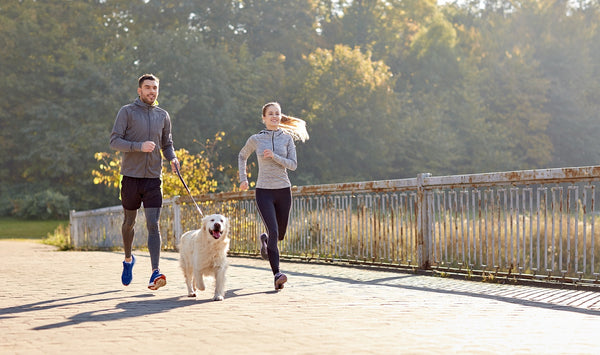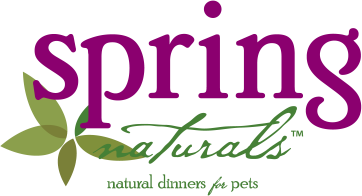
A Checklist to Help Pick a Great Shelter Dog
Pet owners will tell you there is nothing quite like having the companionship of a furry four-legged friend who keeps you active, curls up beneath your feet, and gives you unconditional love 24/7. Whether you are a family, a child-free couple or single, dogs just don’t become a part of your household… they become an important part of your life.
Certainly, if you have been longing to own a great shelter dog, no one would blame you if you wanted to run right out and get one. However, there are quite a few things you should consider first. The breed of dog, choosing a puppy or mature dog, the size of the canine, the dog’s health, and overall cost are just a few of the many things you’ll need to think about.
If you have decided on adopting a shelter or rescue pup there are a few great resources available for potential dog owners. A few options include your local animal shelter, a pet rescue organization, recommendations from a veterinarian, and online forums/galleries like Petfinder.
Choosing Your Shelter Dog
Ideally, the shelter dog you choose should match your personality and your lifestyle, so it will be important to spend time with the dog you are considering. While you are spending time getting to know your potential new companion, you’ll want to observe and evaluate their personality, disposition, and health.
If you feel that you need assistance in evaluating the shelter dog you are interested in, you could always enlist a dog professional to help you in the decision making process—but often, more times than not, just going with your gut instinct will be all you need in choosing the best shelter dog for you and/or your family.
Here is a terrific checklist to help you pick a great shelter dog:
- What is the dog’s ‘style’ of approach to you and others?
Check out their disposition
- Is the dog gentle, respectful, fearful, overly physical, or threatening?
- Does he/she readily come to strangers or seem genuinely afraid by your presence?
- How does the dog interact with people and other animals?
Engage with the dog and observe their social skills
- Is the dog interested, friendly, shy, disinterested, scared, or aggressive?
- Does he/she come when called, follow you around the room, or seem social with other animals?
- How does the dog react to being petted and touched?
Give the dog some love with physical contact
- Does the dog welcome physical contact, love it, and want more?
- Could they care less, doesn’t like it, and prefer not to be touched?
- How does the dog respond to playing?
Grab a toy and play a little ‘catch’
- Does he/she chase, grab, or know how to retrieve a toy?
- Are they non-responsive to and uninterested in any type of playful activity?
- Can you hug/hold the dog?
Everyone needs a dog they can hug
- Can you restrain the dog in your arms for a few minutes without becoming visibly stressed?
- Is he/she tolerant of your hugs, not tolerant, or fusses a bit but then relaxes?
- How are the dog’s bite responses?
Gentle nipping is okay… biting, not so much
- Does the dog nip gently and playfully or bite your hands/clothes more aggressively?
- How is their mouth control? Can you open it easily? Can you remove a toy without incident? Do they take treats gently or roughly grab for them?
- Do they seem possessive?
Check for negative character traits
- Is the dog relaxed or aggressive when you either attempt to approach or take food or a toy away?
- Do they show signs of tensing up, stare at you, growl, or run away?
Dogs who are not possessive will typically be indifferent and have a relaxed demeanor (body and facial expression).
- How do they react to noise?
Make a loud noise by banging something on a hard surface
- Is the dog sensitive to loud noises such as a bang or a clap?
- Is their reaction over-sensitive or just startled?
- Do they simply pause for a second seemingly unbothered or completely stop what they are doing?
- Do they run or hide to remove themselves from the source of the noise or cower in the corner visibly shaken?
- Does the noise invoke a non-response in the pup?
- How the dog responds to a stern voice and/or command?
Interrupt an action with your voice
- Does the dog stop for just a second or stop completely to look at you?
- Is the dog cowering or hiding at the sound of a stern voice?
- Does the sound of your voice illicit no response?
- Does the dog bark or growl at the command?
- How does the dog react to running?
Invite the dog to give chase by running away
- Does the dog playfully chase you or does he grab at you?
- Is the dog jumping on you?
- Is the dog barking at you or does he completely ignore you?
This is especially important for families with children
- How does the dog act around children?
Bring your children to the shelter
- Is the dog respectful and gentle?
- Does he seem fearful?
- Is the dog physical and excitable? (jumping, twirling, & running)
- Is the dog barking or threatening?
If you don’t have children it will still be a good idea to observe how the dog acts with other children.
- How does the dog interact with other dogs?
The more the merrier-—ask the shelter attendant to bring other dogs into the room
- Does the dog appear social (friendly) or non-social (aggressive)?
- Does he/she greet the other dogs politely or doesn’t know how to greet?
- Does the dog know how to play or does he not know how to play?
- How does the dog interact with cats?
Although not always possible at a shelter, any information they can provide would be helpful, especially for those who have cats at home.
- Is the dog respective of and gentle with the cat?
- Is he/she fearful of the cat or is he chasing it?
- Is the dog grabbing and/or injuring the cat?
- Is the dog obsessed with the cat?
- How does the dog respond to a physical examination?
Try looking at their teeth, open their jaw, look in their ears, lift and squeeze their paws and tail.
- Is the dog tolerant or not tolerant of being ‘checked’ over?
- Does the dog seem threatened or aggressive during the examination?
While the check list above can help you in observing and evaluating the dog yourself, the attendants at the shelter will be another great resource. Most shelter’s will be able to provide additional insight into the dog you are considering adopting. Depending on the dog’s individual circumstance and how long they have been at the shelter, employees can share information about their personal interactions, the dog’s background, leash habits, eating habits, and more.
It will also be important to ask the shelter for the dog’s health history. However, depending on their circumstances, obtaining the dog’s health records might not always be possible. In addition to performing a quick physical examination yourself, you’ll also want to look for any signs of illness (runny nose, eye infections, etc.). It’s always recommended that you schedule a visit to the veterinarian soon after you have completed the adoption process.
Here are some questions on your checklist for the shelter:
- Walking habits on leash/outdoor behavior
- Does the dog pull or lag behind/stops suddenly?
- Does the dog pay attention to the person walking them or act like they don’t exist?
- How does the dog respond to other people?
- How does the dog respond to other dogs/animals?
- What is their response to environmental stimuli? (cars/trucks, other loud noises)
- Housetrained
- Does the dog have a history of ‘doing their business’ where they are supposed to?
- Does the dog have any history of accidents?
- Does the dog experience involuntary peeing when excited?
- Crate Trained
- Has the dog ever been placed in a crate or pen?
- What was the dog’s response to being placed in the crate? Barking, whimpering, or fusses for a bit then settles down quietly?
Final Thoughts
Oftentimes, people who are considering adopting a shelter dog will have a clear vision of what type of dog they are looking for—from breed and size to personality and physical attributes. The thing is… all of those preconceived notions of the ‘perfect’ dog can fly right out the window when you hopelessly fall in love with a photo on the Petfinder website, or stop by the shelter on a whim and find your fur-ever canine companion before you head out the door.
When you are ready to hit the shelters or contact an online forum about the dog you’re interested in, take this checklist with you! It is a useful tool that will help you identify specific attributes you want in the dog you adopt. More importantly, you’ll be able to better interpret the shelter dog’s social, emotional, and physical characteristics and determine if the dog is a good fit/match for your home environment and lifestyle.
When you adopt a shelter dog that has been rescued, abandoned, or surrendered, you are not only giving them a second chance, you’ll be giving them a new life in a home where they feel loved, secure, and wanted.

Post a Comment!